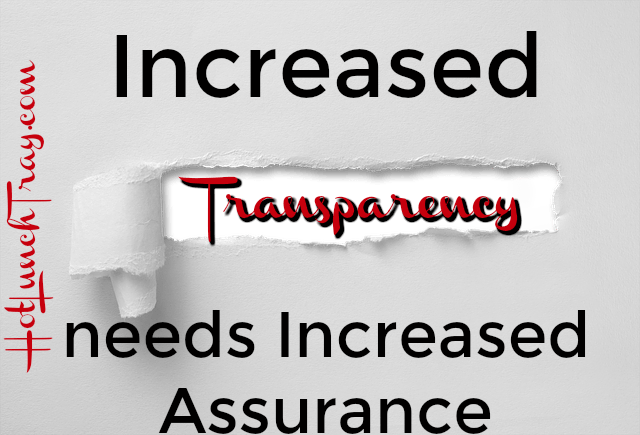Many educational technologies include features with the benefit of making teaching and learning more transparent. For many transparency is a benefit; transparency creates more accountability between stakeholders and equalizes the playing field of education for those who traditionally may not succeed.
What about the teachers and learners who view increased transparency as a deterrent?
Educators and learners who do not yet value transparency require different nurturing.
How to support those who do not yet value Transparency?
Learners & Transparency
Traditional aged students or adult learners who are successful with traditional classwork are most likely to struggle with a higher level of transparency with their learning. As learners shift from the idea that an instructor is the source of knowledge and affirmation of learning in a classroom things are complicated. Complicated because the comfort associated with pleasing one person through a classroom relationship is replaced by meeting objective which contain little room for relationship-based influence. And at the same time, personal contributions are visible to varying degrees to other participants in online environments.
There are ways to assure learners new to this new way of displaying learning to multiple people in a classroom. Shorter intervals of independent work is a good way to provide more frequent feedback between checkpoints to keep more reluctant learners on track and feeling confident. Consider also some reciprocal teaching either whole class or with participants of concern. Give students of concern some defined roles with the online content and supervise as they work through it to become confident of the content’s purpose and what their role as a learner should be. And finally, just be ready for some extra support. With those who have relied on building a relationship (and then leaning on that relationship) with the teacher you can expect to talk more to find out how you can help this person be successful in a more transparent learning environment.
Teachers & Transparency
Teachers who are not yet effective in the traditional classroom yet can benefit from transparent, online teaching and learning environments. Teachers who are still learning about ways to effectively implement curriculum should be enrolled in not just face-to-face, but blended professional learning. These teachers can experience the difference between learning face-to-face and online with the same instructor and related content. This also offers a relationship between teacher and learner where teachers still learning can ask questions, offer up ideas, and receive feedback from an effective teacher. Assurance in other words, that they are doing well or need to alter some aspect of their participation.
Teachers who are currently successful in traditional classroom structures may be less likely to opt into higher level of transparency. It may not be obvious how practices of increased transparency benefit them. And for highly effective face-to-face teachers themselves it may not be more effective, but for a school or district to replicate instruction which works with their student demographics it is beneficial. Students cannot have only one year of highly effective teaching, but the formula should be expanded to similar classrooms when possible; platforms which create more transparent views into successful teaching offer ease of replication. These highly effective teachers transitioning to a new format will need support similar to ineffective teachers. In truth these teachers may appreciate more the magnitude of work needed to produce high quality learning environments. Due to that realization, such teachers require extensive, structured practice time in creating content for online. Those same teachers need a crosswalk between traditional assignments and online assignments with higher transparency. This time and practice is likely not something they have been afforded either in teacher preparation and/or on the job of teaching regardless of the effectivity level of the teacher..
Leaders & Transparency
Leaders themselves need to observe different behaviors when visiting a classroom. Classroom visitations themselves should be both online and in-person; both “places” should support and mirror the same educational environment. Online, leaders are looking for intuitive navigation and positive student interaction with the content and other learners. Face-to-face, leaders are looking for how integrated the online platform is into the day-to-day classroom, how easily do students log on and know what to do, independent but on task behavior from students in the online portions of their blended learning, and what are the students saying about the online content? Leaders may need to seek out exemplars outside their school/district if examples do not yet exist in their school/district.
School or district leaders likely need training on this new teaching and learning environment. They need to be aware of how teachers are asking students to learn to help families cope with this shifting mode of education. Maybe the most important reason they need training to to fully understand the amount of training some of their most fragile teacher-learners require. With families and teachers assured, leaders will be able to manage this new movement in education.

Educators and learners who do not yet value transparency require different nurturing. Help them come to value a more open view into education. Help them thrive in transparency through your support of their planning time, their training, and stepping the most reluctant through with tiny steps.





4 Pingbacks